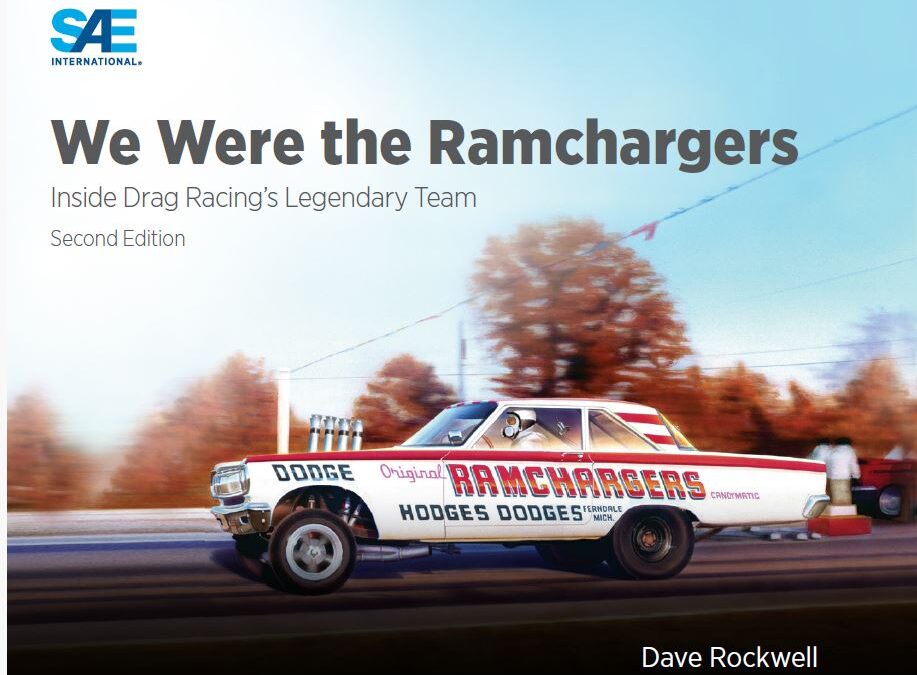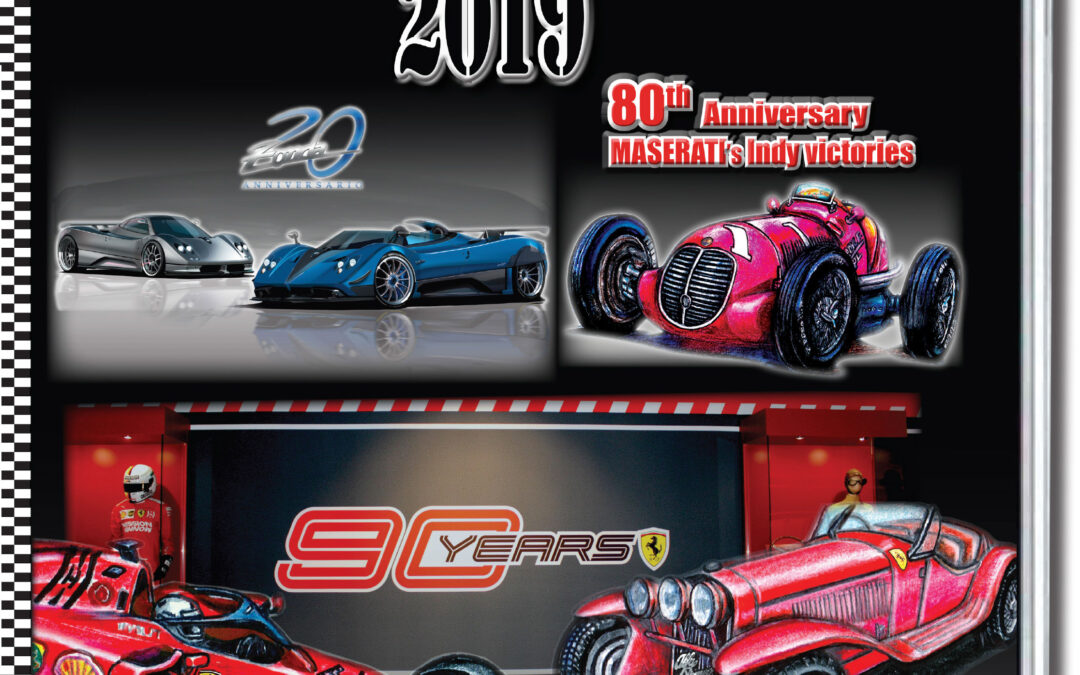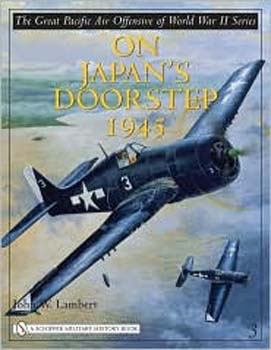
John W. Lambert

The inspiration for the major Apple TV+ series, streaming now!
The riveting history of the American Eighth Air Force in World War II and the young men who flew the bombers that helped beat the Nazis and liberate Europe, brilliantly told by historian and World War II expert Donald L. Miller. The Masters of the Air streaming series stars Austin Butler and Callum Turner, and is produced by Tom Hanks and Steven Spielberg, the legendary duo behind Band of Brothers and The Pacific.
Masters of the Air is the deeply personal story of the American bomber boys in World War II who brought the war to Hitler’s doorstep. With the narrative power of fiction, Donald Miller takes you on a harrowing ride through the fire-filled skies over Berlin, Hanover, and Dresden and describes the terrible cost of bombing for the German people. Masters of the Air is the deeply personal story of the American bomber boys in World War II who brought the war to Hitler’s doorstep. With the narrative power of fiction, Donald Miller takes you on a harrowing ride through the fire-filled skies over Berlin, Hanover, and Dresden and describes the terrible cost of bombing for the German people.
Fighting at 25,000 feet in thin, freezing air that no warriors had ever encountered before, bomber crews battled new kinds of assaults on body and mind. Air combat was deadly but intermittent: periods of inactivity and anxiety were followed by short bursts of fire and fear. Unlike infantrymen, bomber boys slept on clean sheets, drank beer in local pubs, and danced to the swing music of Glenn Miller’s Air Force band, which toured US air bases in England. But they had a much greater chance of dying than ground soldiers.
The bomber crews were an elite group of warriors who were a microcosm of America—white America, anyway. The actor Jimmy Stewart was a bomber boy, and so was the “King of Hollywood,” Clark Gable. And the air war was filmed by Oscar-winning director William Wyler and covered by reporters like Andy Rooney and Walter Cronkite, all of whom flew combat missions with the men. The Anglo-American bombing campaign against Nazi Germany was the longest military campaign of World War II, a war within a war. Until Allied soldiers crossed into Germany in the final months of the war, it was the only battle fought inside the German homeland.
Masters of the Air is “a stunning achievement” (David McCullough), “a fresh new account” (Walter Boyne, former director of the Smithsonian Air and Space Museum) of life in wartime England and in the German prison camps, where tens of thousands of airmen spent part of the war. It ends with a vivid description of the grisly hunger marches captured airmen were forced to make near the end of the war through the country their bombs destroyed.
Drawn from recent interviews, oral histories, and American, British, German, and other archives, Masters of the Air is an authoritative, deeply moving account that “accurately and comprehensively” (Lt. Gen. Bernard E. Trainor, USMC (Ret.) and coauthor of Cobra II) tells of the world’s first and only bomber war.
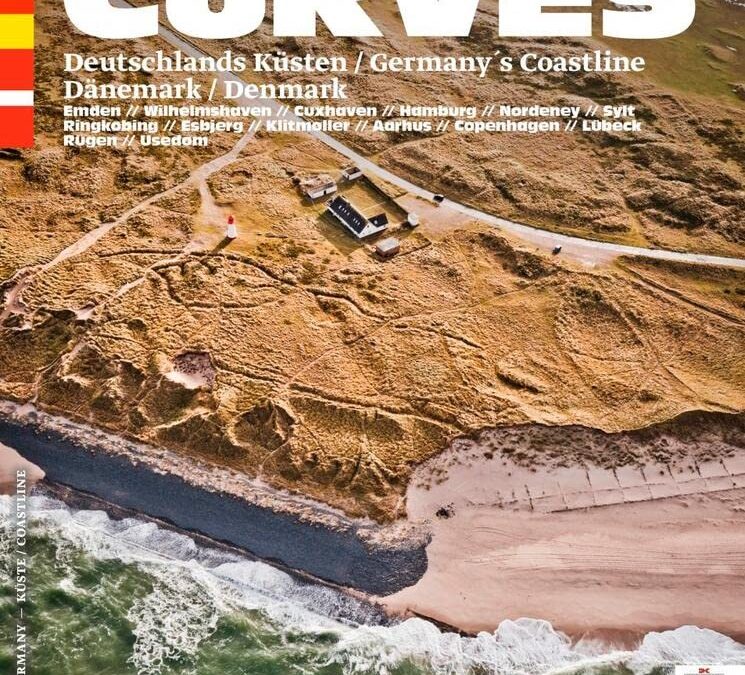
• Beautiful photographs portray the stunning coastal roads of Germany
• A new addition to a highly successful series
• Perfect tips for routes and sightseeing
You do not need to go to California for scenic coastal roads or relaxed cruising – not when you have that right on your doorstep in Europe. Instead of chewing gum, eating burgers and drinking Coca-Cola, your traveling companions will experience liquorice, tea and shrimp rolls – and, of course, Porsche. In the latest Curves volume, Stefan Bogner travels the German coastline from von Emden to Hamburg, visits the North Frisian island Sylt, and takes a trip to Denmark. From Klitmoeller he goes to Copenhagen and Lübeck. The journey comes to an end in between seaside resorts and chalk cliffs on Rügen, an island in the Baltic. Text in English and German.

In the late 1970s, the problem facing any manufacturer taking part in the World Rally Championship was that the rules kept being changed at short notice. This book looks at the solutions found for Lancia’s rally car, the 037, and takes the reader through the new rules that all potential contenders would have to consider if they wanted to win rallies at World Championship level.
Lancia’s Rally was developed quickly to deal with the then-dominant Audi Quattro. The reasons it succeeded are featured here, along with an in-depth, behind-closed-doors look at the development of the car, with the close help and cooperation of its designer and chief engineer, Ing. Sergio Limone.
Here you can read how he decided on the basic configuration of the car, what the rules would allow, and how the project unfolded in total secret at Fiat’s various test tracks and centres in and around Turin, overlaid with rumour and counter-rumour as the world’s motoring press tried to make sense of what little knowledge it had of the project’s progress. In addition, Ing. Limone’s own photographs from areas never accessed by the public tell their own story. The focus then moves to the world of top-level rallying, with all the associated glory and headaches. Accompanied by stunning photography and insights from team members, we follow the small and nimble 037s, as the cars have become popularly known, as they head out to take the World Rally Championship for Makes in 1983 and innumerable wins throughout the world. In addition, there are tests of various key examples of the cars, and appendices of events and chassis used. This book is illustrated with 250 stunning and rare rally action photos.
Veloce Classic Re-Prtint
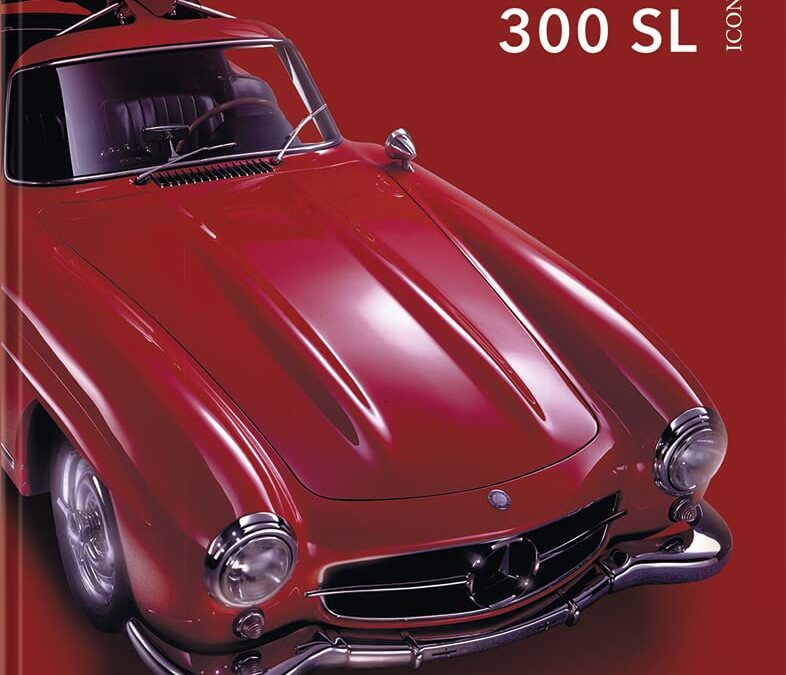
Hard facts, soft skills: technical data, casually recounted anecdotes, and plenty of interesting lifestyle information
• On track and on the screen: the successes of the 300 SL in racing and its many appearances in the movies and on television
• A must-have for all gullwing fans
In 1954, the Mercedes-Benz 300 SL was unveiled at the International Motor Sports Show in New York — the start of an unparalleled success story. Victories in the 24-hour race at Le Mans and the Carrera Panamericana made it world-famous. It also possessed groundbreaking technology, including the first series-production fuel-injected engine. Its elegant shape and futuristic gullwing doors made it a coveted prize, symbolizing exclusivity and freedom. This volume has everything that is important about the legendary sports car: wonderfully aesthetic automotive photography by René Staud and archive pictures rich in patina, snapshots of racing successes and famous owners, and interesting facts from the model’s history to the colors of the paintwork.
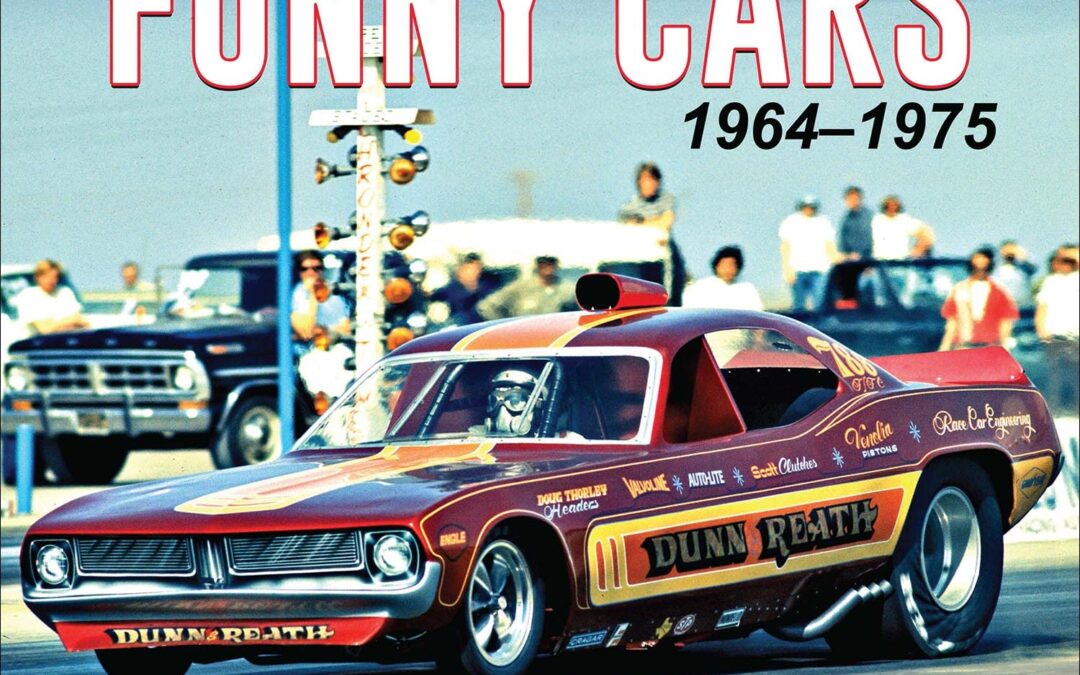
Blast through the evolving early years of Funny Car drag racing when doorslammers morphed into flip-top rail monsters. The era features historic mounts from Arnie “the Farmer” Beswick, Al “the Flying Dutchman” Vanderwoude, “Jungle” Jim Liberman, Don “the Snake” Prudhomme, and many more!
The metamorphosis from doorslammers to fiberglass flip-top dragsters wasn’t ever a cut and dry plan. As drag racers pushed the envelope for more speed, a series of innovations quickly evolved and refined the genre.
Funny Cars cut their teeth in the A/Factory Experimental (A/FX) and Experimental Stock (X/S) classes in 1964 with the 2-percent Mopars that looked funny with their axles moved forward. However, it was Jack Chrisman’s supercharged, nitro-fueled 427 Supercharged Factory Experimental (S/FX) Comet Caliente that trailblazed the class on which the NHRA turned its back and the AHRA fully accepted. Showmanship became the draw in the dawn of Funny Car with half-track burnouts and flame-throwing headers that packed fans five deep at the fence.
By 1969, the NHRA had no choice but to create a class for these nitro-breathing, flip-top-sporting rail bruisers, indoctrinating the Funny Car (F/C) class at the Winternationals with 40 cars vying for 16 places in the field. The rest, as they say, is history!
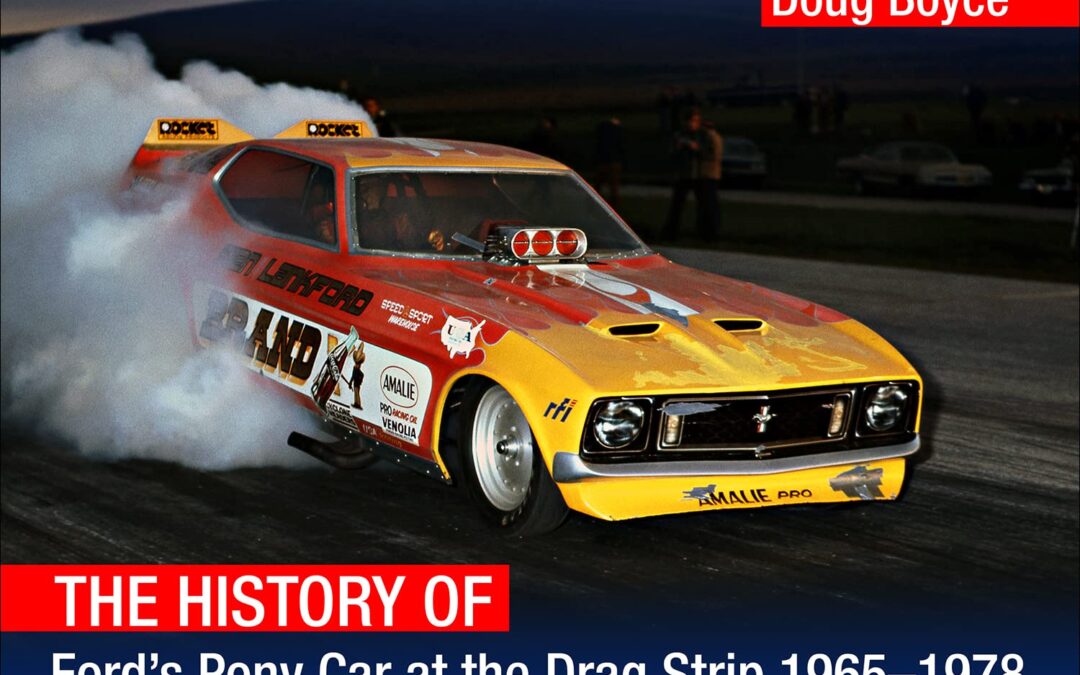
Blast down the quarter mile in the first two generations of Ford’s legendary pony car across all drag racing classes in Quarter-Mile Mustangs!
Since first becoming a mass-market success in mid-1964, the Ford Mustang has made millions of passes down the quarter mile on sanctioned drag strips. With styling flared toward the youth, aftermarket parts manufacturers saw an enormous opportunity to produce go-fast components to aid in propelling Ford’s pony car down the 1320. The success of these cars was immediate.
In the hands of successful and seasoned pros, such as Gas Ronda, Bill Lawton, and Dick Brannan, Ford unleashed the devastatingly potent 1965 A/FX Mustang fastback, which was built by Blue Oval stalwarts Holman & Moody with the 427 SOHC (Cammer) engine that unleashed havoc on mother Mopar.
From those very first factory drag cars through the fabled 1968-1/2 Cobra Jets, drag racing historian Doug Boyce highlights the many successes of pioneers, such as “Dyno” Don Nicholson, Les Ritchey, Phil Bonner, Hubert Platt, and Al Joniec. However, it’s not just all doorslammers. As A/FX transitioned into Funny Car, a whole new chapter in Mustang drag racing was written with Mickey Thompson taking the reins and steering Mustangs to success throughout the late 1960s and early 1970s.
The muscle car-era Mustangs joined the Mustang II and soldiered on the best they could as ever-changing rules hampered Ford’s new pony body, with drivers Bob Glidden and Nicholson trying to squeeze every bit of performance out of the diminutive pony.
Quarter-Mile Mustangs: The History of Ford’s Pony Car at the Drag Strip 1964-1/2-1978 brings forth the most in-depth coverage of these cars at the drag strip. Don’t get caught sleeping at the light!
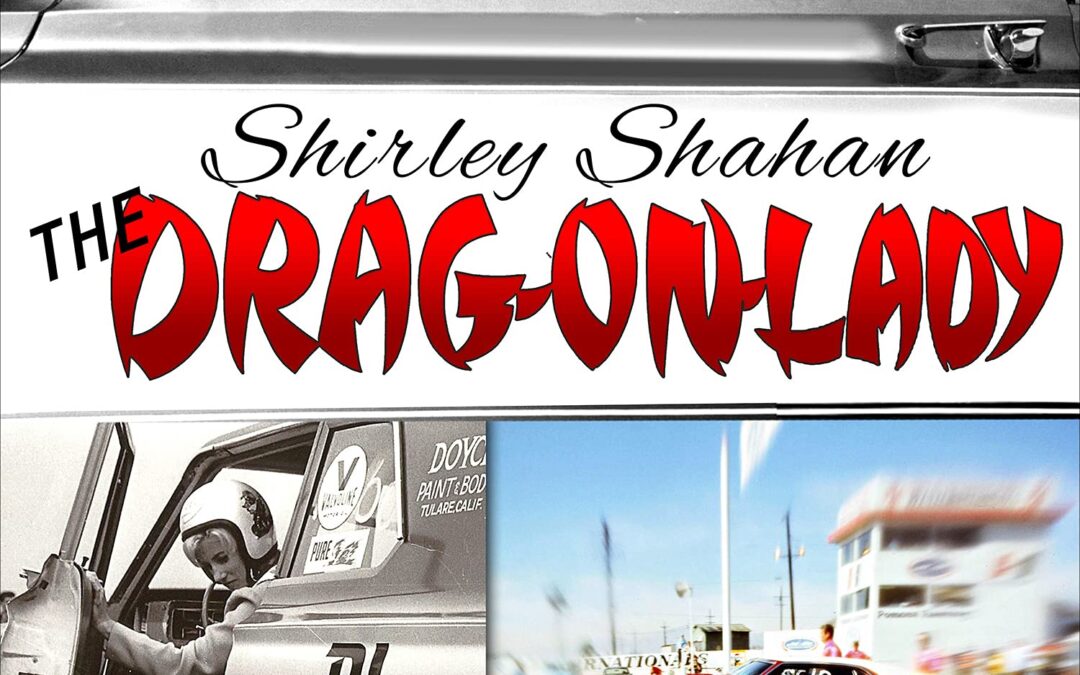
Meet drag racing legend and pioneer Shirley Shahan, the Drag-On Lady!
As the first woman to win an NHRA national event when she was named Top Stock Eliminator at the 1966 Winternationals, Shahan blazed a trail for women in drag racing. During the golden era of drag racing, it was rare to find diversity in the sport. Shahan is what’s commonly known as a living legend.
In a career that spanned the 1950s and into the early 1970s, Shahan drove 1956 and 1958 Chevys and was one of the lucky few who was able to purchase one of the rare 1963 Chevrolet RPO Z11 Super Stockers. Later, when she was driving for Plymouth and Dodge, Shahan made the name Drag-On Lady both famous and feared. She then moved to American Motors and raced very successfully with the new SS/AMX.
From 1958 to 1972, Shahan set records and won numerous awards. She was inducted into the International Drag Racing Hall of Fame, Super Stock Magazine Hall of Fame, and Mopar Hall of Fame, and she was honored with a lifetime achievement award at the Bakersfield racetrack. In addition, Shirley won the Top Stock category at the very first March Meet at the legendary the Famoso Raceway track near Bakersfield, California, which made her the first person (male or female) to do so. In 1966, she was the named one of Hot Rod magazine’s Top 10 Drivers.
She raced against the best drivers during the golden age of drag racing and more often than not blew off the doors of her opponents. She had a fierce passion for winning, and in this book, you’ll feel what it was like to be behind the wheel as she steers you through her illustrious career. Fasten your seat belt; it’s going to be a wild ride.

The piston engines that powered Second World War fighters, the men who designed them, and the secret intelligence work carried out by both Britain and Germany would determine the outcome of the first global air war.
Advanced jet engines may have been in development but every militarily significant air battle was fought by piston-engined fighters. Whoever designed the most powerful piston engines would win air superiority and with it the ability to dictate the course of the war as a whole. This is the never-before-told story of a high-tech race, hidden behind the closed doors of design offices and intelligence agencies, to create the war’s best fighter engine.
Using the fruits of extensive research in archives around the world together with the previously unpublished memoirs of fighter engine designers, author Calum E. Douglas tells the story of a desperate contest between the world’s best engineers – the Secret Ho
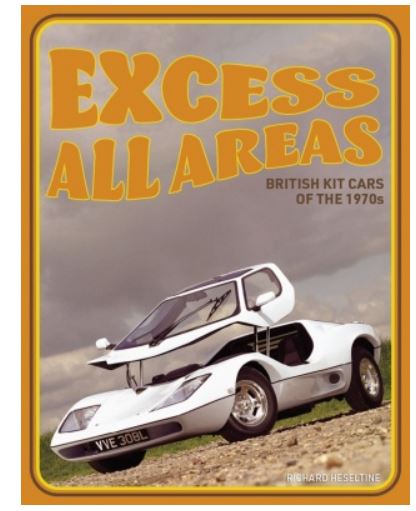
The 1970s witnessed the rebirth of the British kit car. It may have been the decade that taste forgot, but it was also a period where nothing was off limits. Would sir or madam like their car with three wheels or six? How about a windscreen that handily doubles as a door? Perchance something more along the lines of an Edwardian ‘horseless carriage’ with no doors at all? Alternatively, maybe a sports car with a roof at waist level, or even a trike made of timber? How about endless permutations of all of these things and more? Excess All Areas – British Kit Cars of the 1970s is a bountifully-illustrated celebration of homemade cars at their best – and worst.
Author Richard Heseltine is a journalist, author and biographer. A former staff member on Classic & Sports Car and Motor Sport, he has written extensively for Octane, Magneto, Classic Cars, Auto Italia, Autosport and Absolute Lotus. Richard has authored books on subjects as diverse as the British specialist sports car industry and coachbuilt Ferraris. He became a published novelist in 2019 with the release of Life Near The Edge.
“It’s a book as much about lost car culture as it is about the cars themselves” Classic Cars magazine
“My personal book of the year… a fact laden gem” Steve Hole, TKC
“This is a great fun book… right up our street in creativity, ingenuity or just plain wackiness” Jeroen Booij, Maximum Mini

When Bruno Sacco walked through the doors on his first day at Mercedes-Benz on 13 January 1958, it is highly unlikely that his Daimler-Benz colleagues could ever imagine that this nervous young man would not only revolutionize design but would change the way design and innovation connected with brand tradition forever.
Bruno Sacco is one of the most influential automotive designers of the late twentieth century; many models launched during his era now characterize the Mercedes-Benz brand. When Nik Greene asked Bruno Sacco to assist with this book, he replied humbly “No-one designs a car alone, and more to the point, I never, for one minute, wanted to. From the moment I became Head of Design, I put down my pens and became a manager of minds.”
With over 330 photographs and illustrations, this book includes an overview of the early days of functional vehicle design and the influence of safety on design evolution. The protagonists of Daimler-Benz design from Hermann Ahrens to Paul Bracq are covered. Design philosophy and innovation under Bruno Sacco is discussed along with the Sacco-designed cars and, finally, the Bruno Sacco legacy.
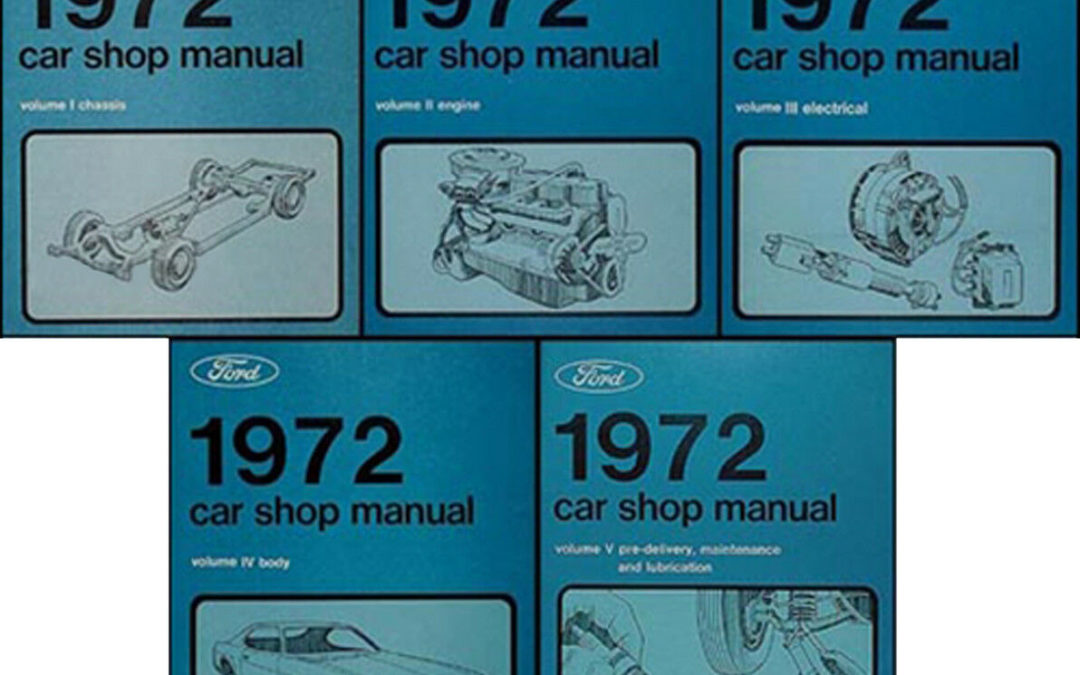
1972 Ford Car Shop Manual includes: The 438 page “Volume 1-Chassis,” the 410 page “Volume 2-Engine,” the 403 page “Volume 3-Electrical,” the 340 page “Volume 4-Body” and the 70 page “Volume 5-Pre-Delivery, Maintenance and Lubrication.” These manuals are high quality reprints of the books that Ford mechanics used to service vehicles.
Covers all Ford Motor Company cars including 1972 Ford (Custom, Custom 500, Galaxie 500, LTD, LTD & Brougham), Torino (Gran Torino, Gran Torino Sport, Ranchero), Mustang (Standard, Grande, & Mach I), Maverick, Pinto, Thunderbird, Continental, Continental Mark IV, Brougham, Cougar, XR-7, Marquis, Meteor, Montego (including MX, MX Brougham, and GT), and Monterey.
In Volume 1 you will find detailed service procedures for: wheels, tires, brakes, steering, suspension, driving axles, drive shafts, clutch and manual transmission and automatic transmission.
In Volume 2, you will find step-by-step repair instructions for: gasoline engines, ignition systems, fuel systems, exhaust system, cooling system and starting systems.
In Volume 3 you will learn about working on: charging system, lighting system, instruments, clusters and controls, main wiring harnesses and circuit protection, auxiliary equipment, ventilating, heating, air-conditioning, speed control and anti-skid control.
In Volume 4 you will find service procedures for: seats window glass and mechanisms, stationary window glass, doors, hood, luggage compartment door, tailgate, interior trim, tops and exterior finishes, body shell, exterior trim, frame and underbody.
In Volume 5, you will find detailed instructions for: pre-delivery and maintenance schedules, hoisting, jacking, and towing.
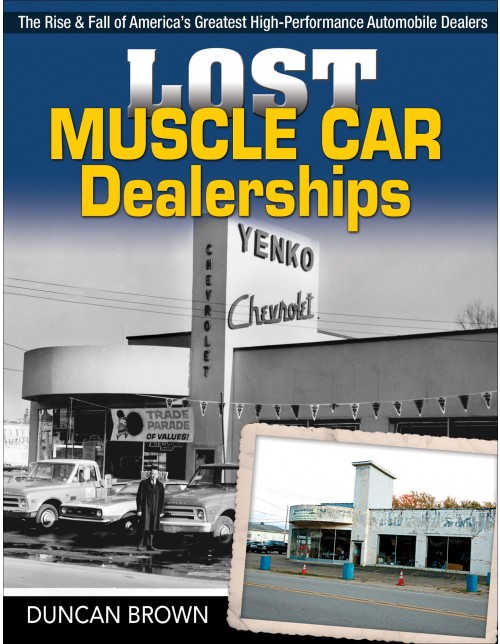
An entire volume dedicated to detailing and preserving the iconic muscle car dealerships of the 1960s and early 1970s, many whose doors are now closed. Text is supported with more than 350 historic photos and illustrations.
Muscle car historian Duncan Brown revisits this glorious automotive era when Nickey 427 Camaros and supercharged Dodge Demons by Grand Spaulding Dodge terrorized the streets. Drag sponsored cars from Reynolds Buick, Yeakel Chrysler-Plymouth, and Mel Burns Ford informed buyers that if you came to their dealership, you too could have a screaming fast muscle car just like the ones you saw at the dragstrip. It was these dealerships that created the lasting muscle car legacy through their innovative advertising and over-the-top performance.
The majority of these dealerships floundered, unable to re-attract the customers they had prior to the muscle car. Thankfully, a volume has been dedicated to preserving the history of those less fortunate and revisiting the past success of these Lost Muscle Car Dealerships
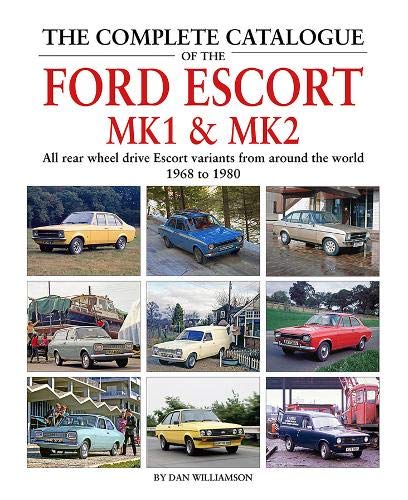
All rear-wheel drive Escort variants from around the world, 1968-1980
Escorts Mk1 and Mk2 were built in huge numbers around the world, in Britain, France, Germany, Spain, Australia, New Zealand and South Africa. During the life of the models, no less than 130 different variants were produced, ranging from the 2-door base model saloon through four-doors, vans and estates, campers and plush Ghia models to the highly desirable sporting versions like the Twin-Cam and RS models. In addition there were special editions by companies such as Allard, Crayford, Broadspeed, Lawrencetune, Uren and Willment. For every variant, The Complete Catalogue of the Ford Escort Mk1 & Mk2 provides specifications and a description, and all of them are illustrated.
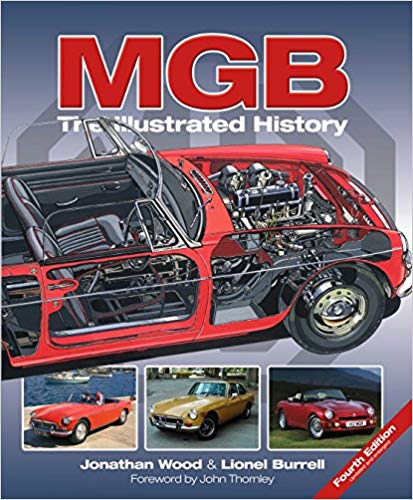
Sales of over half a million units made the MGB Britain’s most successful ever sports car. And the truth is, that more than three decades after production ceased, the MGB’s classic lines, affordability, fun factor and certain ‘rightness’ mean that its enthusiastic following remains undiminished.
In MGB: The Illustrated History the authors, self-confessed ‘B’ enthusiasts both, recall the remarkable history of this remarkable car. Originated with full co-operation and contributions from key members of the original design team, including John Thornley, Syd Enever, Don Hayter and Roy Brocklehurst, this book takes the reader behind the scenes at the world-famous MG factory at Abingdon, which closed its doors in 1980 with the demise of the MGB after 18 years in production.
The background to the MGB roadster’s development is first recalled in the context of its immediate predecessor, the MGA, the various famous EX experimental models, and the heritage of MG as a whole. Separate chapters then follow the development, introduction and production of the GT, MGC and V8. Further chapters on the MGB’s competition successes and the RV8 complete the story. Along with a feast of color photographs and contemporary brochure material – enough to satisfy even the most ardent MGB lover – the book also features full-color cutaway illustrations of the three main ‘B’ variants. Copiously illustrated with contemporary color photographs and brochure material, and featuring color cutaway illustrations of the MGB roadster, MGC, MGB GT V8 and MG RV8, this book not only charts the production life of Britain’s best-loved sports car, but also takes the reader behind the scenes at the world-famous Abingdon factory.
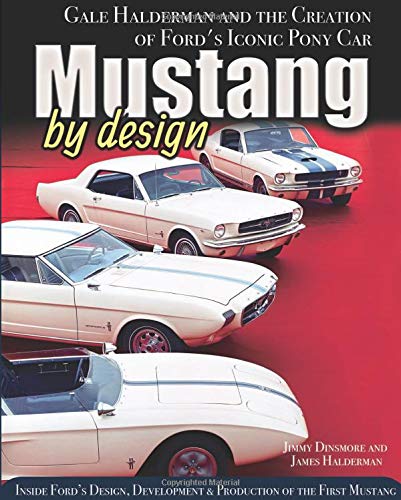
Without question, the 1964-1/2 Mustang is one of the most important and influential cars in automotive history. When Ford launched the Mustang, it created an automotive revolution. Award-winning designer and stylist Gale Halderman was at the epicenter of the action at Ford, and, in fact, his initial design sketch formed the basis of the new Mustang. He reveals his involvement in the project as well as telling the entire story of the design and development of the Mustang.
Authors and Mustang enthusiasts James Dinsmore and James Halderman go beyond the front doors at Ford into the design center, testing grounds, and Ford facilities to get the real, unvarnished story. Gale Halderman offers a unique behind-the-scenes perspective and firsthand account of the inception, design, development, and production of the original Mustang. With stinging losses from the Edsel fresh in minds at Ford, the Mustang project was an uphill battle from day one. Lee Iacocca and his assembled team had a herculean task to convince Henry Ford II to take a risk on a new concept of automobile, but with the help of Hal Sperlich’s detailed market research, the project received the green light. Henry Ford II made it clear that jobs were on the line, including Iacocca’s, if it failed.
The process of taking a car from sketch to clay model to prototype to preproduction and finally finished model is retraced in insightful detail. During the process, many fascinating experimental cars, such as the Mustang I two-seater, Mustang II prototype, Mustang Allegro, and Shorty, were built. But eventually the Mustang, based on the existing Ford Falcon, received the nod for final production. In a gala event, it was unveiled at the 1964 World’s Fair in New York. The Mustang received public accolades and critical acclaim, and soon it became a runaway hit. After the initial success, Ford designers and Gale Halderman designed and developed the first fastback Mustangs to compliment the coupes. The classic Mustang muscle cars to follow, including the GT, Mach 1, and others, are profiled as well.
The Mustang changed automotive history and ushered in the pony car era as a nimble, powerful, and elegantly styled sports coupe. But it could so easily have stumbled and wound up on the scrap pile of failed new projects. This is the remarkable and dramatic story of how the Mustang came to life, the demanding design and development process, and, ultimately, the triumph of the iconic American car.



